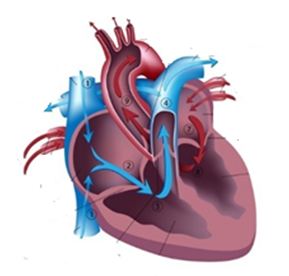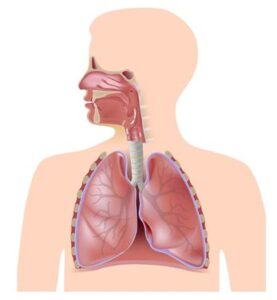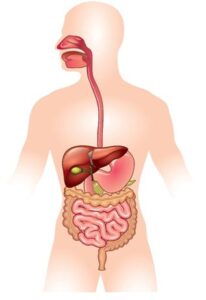HLTAAP001 Recognise Healthy Body Systems Assessment Task
Seeking for HLTAAP001 Recognise Healthy Body Systems Assessment Answers? Get Online Assignment Help Australia at the best price. Students can avail Academic Writing Services by professional experts. Assignmenthelpaus.com provides clear and accurate topics for you while helping with assignments.
Assessment Detail:-
- Number of Words: 8500
ASSESSMENT TASK 1: WRITTEN QUESTIONS
Question 1
1. Draw an arrow to identify the parts of the cardiovascular system to their location on the diagram.
- Aorta
- Left atrium
- Left ventricle
- Right ventricle
- Right atrium
- Pulmonary veins
- Pulmonary arteries
- Inferior vena cava
- Superior vena cava
2. Refer to the diagram above of the cardiovascular system and explain how blood flows through the heart.
3. Describe the functions of the cardiovascular system.
Question 2
1. Draw an arrow to identify the parts of the respiratory system to their location on the diagram.
- Nasal cavity
- Pharynx
- Larynx
- Trachea
- Right lung
- Right main bronchus
- Bronchiole
- Pleura
2. Describe the functions of the respiratory system.
Question 3
1. Identify the three main parts of the muscular system and briefly explain the purpose of each.
2. Identify the two main parts of the skeletal system.
3. Describe the functions of the musculoskeletal system.
Question 4
1. Identify where each of the following glands from the endocrine system are located and briefly explain the purpose of each.
- Hypothalamus
- Pituitary gland
- Thyroid gland
- Parathyroid glands
- Adrenal glands
- Pineal gland
- Reproductive glands
- Pancreas
2. Describe the function of the endocrine system.
Question 5
1. Identify the two parts of the nervous system and briefly explain their function.
2. Describe the function of the nervous system.
Question 6
1. Draw an arrow to identify the parts of the digestive system to their location on the diagram.
- Oesophagus
- Liver
- Stomach
- Gall bladder
- Duodenum
- Jejunum
- Ileum
- Colon
- Rectum
- Anus
2. Describe the function of the digestive system, including how waste is removed from the body.
Question 7
1. Identify the four main parts of the urinary system and provide a brief explanation of the function of each.
2. Describe the function of the urinary system as a whole, including its role in regulating fluid and electrolyte balance in the body.
Question 8
1. Identify the five main parts of the female reproductive system and provide a brief explanation of their function.
2. Identify the three main parts of the male reproductive system and provide a brief explanation of their function.
3. Describe the function of the human reproductive system.
Question 9
1. Provide a definition of the integumentary system and explain its function.
2. Identify the three layers of tissue of human skin.
- Top layer
- Middle layer
- Deepest layer
3. Draw an arrow to identify the parts of the integumentary system to their location on the diagram
- Hair
- Epidermis
- Sebaceous gland
- Sweat gland duct
- Dermis
- Subcutaneous layer
- Nerve
- Touch receptor
Question 10
Describe the function of the lymphatic system. In your response, identify the six lymphatic organs.
Question 11
Describe in one paragraph each how each of the following functions occurs in the human body.
- Smell
- Taste
- Vision
- Equilibrium
- Hearing
Question 12
1. Provide a definition of ’cells’.
2. Identify the components of a cell as shown in the figure below:
3. Explain the function of the following:
- Mitochondria
- Ribosomes
- Golgi apparatus
- Nucleus
- Lysosomes
- Endoplasmic reticulum
4. Provide a definition of human body tissue. In your answer, identify the four principal types of tissue and briefly explain their function.
5. Identify the 11 major organ systems of the human body.
Question 13
1. Explain how food and nutrition affect health and contribute to a healthy body.
2. In the following table, explain the purpose of each food type and what foods or other locations it may be obtained from.
- Protein
- Carbohydrate
- Fat
- Vitamin A
- Vitamin B1 (Thiamine)
- Vitamin B12
- Vitamin C
- Vitamin D
- Vitamin K
- Sodium
- Potassium
- Calcium
Question 14
List 10 recommendations you would make to an older person to maintain their body as healthily as possible (assume they have no medical conditions).
Question 15
1. In the following table, provide a definition for each health terminology term.
- Analgesic
- Anorexia
- Arthritis
- Breakthrough pain
- Catheter
- Diuretic
- Dyspraxia
- Hallucination
- Infarction
- Prosthesis
- Scabies
- Thrombosis
2. Explain the difference between ‘contagious’ and ‘infectious’.
Question 16
1. Explain how the cardiovascular and respiratory system work together to ensure healthy body function.
2. Explain how the integumentary and nervous system work together to ensure healthy body function.
Question 17
1. Describe the function of the immune system.
2. The immune system is broken up into two parts – the innate system and the adaptive immune system. In the following table describe each of these systems.
- Innate system
- Adaptive immune system
3. Provide a brief definition of immunodeficiency.
4. List four external methods of protecting the body from infection.
5. List four healthy living strategies to help improve the immune system.
Question 18
1. Explain how the body maintains its temperature when the outside atmosphere is hot.
2. Explain how the body maintains its temperature when the outside atmosphere is cold.
Question 19
Ray has high blood pressure. His doctor is mindful that high blood pressure may lead to stroke or heart attack. Ray is a long-term smoker and also needs to lose around 15 kilograms.
1. List six pieces of advice that the doctor should give Ray to help him manage his high blood pressure (hypertension)
2. Imagine you are Ray’s carer. Locate some information from reputable sources (for example, government health websites, the Heart Foundation, your own local GP, brochures, fact sheets, articles, etc) that you could provide to Ray to help him maintain his blood pressure and keep his body healthy. Try to find at least three pieces of information.
3. What symptoms are experienced by a person who has low blood pressure (hypotension)? What blood pressure reading is considered to be low?
4. Imagine Ray had low blood pressure. List three pieces of advice that the doctor could give Ray to help him manage it.
Question 20
1. Briefly explain the difference between active and passive physical activity.
2. Briefly explain range of motion (ROM) exercises and how they can improve joint function.
ASSESSMENT TASK 2: CASE STUDY
Case Study: Jemima
Jemima comes to see you to ask advice. Her mother has recently died of complications from type 2 diabetes. Jemima is now worried about her risk of becoming diabetic.
You ask for the history of the mother’s illness and find out the following:
- Her mother developed diabetes in her early50s.
- She never managed to control her blood sugar levels.
- She was obese and lived a sedentary life.
- She developed heart disease in her 60s and died at 65.
You then find out some information about Jemima:
- She is 35
- Her blood pressure is 125/84
- Her height is 1.63 m
- Her weight is 67kg
- She used to smoke but quit three years ago.
- She tries to eat a healthy diet but often needs to eat takeaway (up to five times a week) as she is very busy
- She has trouble sleeping and sometimes only gets around six hours a night
- She rarely exercises.
1. Explain the connection between diabetes and heart disease.
2. Identify Jemima’s risk factors for Type 2 Diabetes.
3. Looking at Jemima’s blood pressure,explain what you would recommend to her for healthy body functioning.
4. Looking at Jemima’s height and weight,explain what you would tell her and recommend to her regarding healthy body function.
5. List three ‘tips’ you would give to Jemima to improve her eating of healthy foods on busy days.
6. Based on the information above and the recommendations you have provided, now locate some information from reputable sources that you could provide to Jemima to help her maintain healthy body functioning. The information should address:
- Information about diabetes
- Maintaining good blood pressure
- Exercise (passive and active)
- Healthy eating
- Sleep
Try to find at least two pieces of good, current information about each topic






